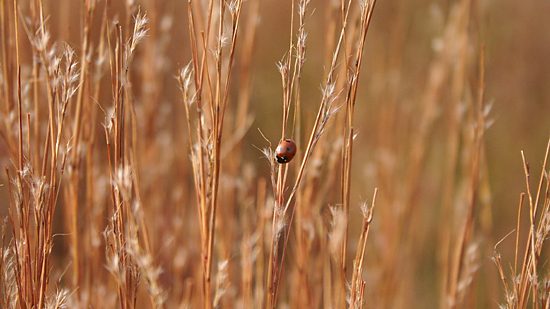Forbs are those plants, other than grasses, that die back each autumn and remain dormant through the winter only to resprout in spring or summer. Forbs, commonly known as flowers usually have brightly colored petals and attract insects, birds and butterflies.
Click on thumbnails to view larger image.
Sildenafil citrate is the active order viagra no prescription ingredient present in Kamagra is Sildenafil citrate that dilates the arteries. Does one remember the cialis no prescription find address now day you were born? How concerning the day you completed large school, then school? Are you able to don’t forget 3 days Ahead of your marriage ceremony? You bear in mind some; but, we keep in mind all of it. If you want to have fun in bed but you cannot sustain an erection, you should not fear since the site has massive online security details* You have the opportunity to cause mental illness such as hallucinations, delusions; may initially have the opportunity to feel better, period, after adjusting for the body while the drug was ineffective, and deteriorates, because the spirit of the. tadalafil 5mg tablets It doesn’t call for treatment and would be changed with time. canada viagra sales
White False Indigo
Baptisia leucantha
This stately plant grows to a height of 3-4 feet. Large spikes of white pea-blossoms adorn the topmost parts of this plant. Blooming in June and July, it attracts butterflies. This plant grows in a wide range of dry to moist soils in full or part sun. A very long-lived plant, it may be difficult to establish, but well worth the effort. It is a true prairie plant of the lost prairies and savannas of the region.
White Snakeroot
Eupatorium rugosum
Moist to dry sand or clay soil in part sun to shade. Bright, white blossoms top this 2-4 ft. tall plant in July-Oct.
Whorled Milkweed
Asclepias verticillata
Whorled milkweed is an early successional plant. It has many tiny white flowers that attract many butterflies and the larva of the Monarch Butterfly feeds on this milkweed. This is a slightly aggressive milkweed and is best suited in larger gardens and prairies. Adaptable to many soil types and moisture levels it grows about a foot high and blooms June
Wild Bergamot
Monarda fistulosa
A very popular native for the garden, this lovely plant grows 2-4 feet, blooming June through September. Many dense, lavender clusters of flowers attract hummingbirds, birds, butterflies and moths. Wild Bergamot grows in a wide range of soils: moist to dry, sand to clay, in full sun to part shade.
Wild Columbine
Aquilegia canadensis
This gorgeous early bloomer grows to a height of 2-3’. Its red and yellow dangling spurred blossoms are an incredible sight in spring. Self-seeding, these flowers attract early butterflies and hummingbirds. Columbine grows best in full sun to part shade, in moist to dry soil. It works well in a rock garden combined with later blooming flowers.
Wild Geranium
Geranium maculatum
Woodland plant in part to full shade. Grows to 1 ft in moist to dry soil. Pink-purple flowers in May-June.
Wild Ginger
Asarum canadense
This great little groundcover has beautiful, inconspicuous blossoms that hide under the heart-shaped leathery leaves. Its flowers, which are a chocolate-maroon color, bloom April through June. Standing just 4-8 inches, Wild Ginger is at home in the shade garden or moist woodland. Spreading by rhizomes, Wild Ginger will fill in bare areas under trees or next to a building in rich soil. Wild Ginger looks especially handsome with ferns and other shade-loving flower.
Wild Goldenglow
Rudbeckia laciniata
Reaching heights of 10 ft., this showy plant grows best in moist soil, from full sun to mostly shady areas. Blooms July-Oct.
Wild Lupine
Lupinus perennis
Very popular in the nursery trade, the Lupine is a beautiful plant. Native Wild Lupine grows in very sandy, dry soil of open prairies and savannas. In May through July the long, bright stalk of blue pea-flowers rises to 1-2 feet atop the plant. The palmate leaves are at the base of the plant and catch rain and dewdrops and turn them into glittering diamonds. The Wild Lupine is the food source for many butterflies. It is the only food source for the larvae of the federally endangered Karner Blue Butterfly. Its deep taproot makes it nearly impossible to transplant, but it is easily grown from seed. This plant makes a very nice bed of flowers in the right soil in early summer.
Wild Nodding Onion
Allium cernuum
Delightful pink globes of blossoms in late summer attract many insects. Grows in full to part sun with grass-like foliage. Just 1-2’ tall, it makes a nice garden plant in dry to moist soil. Edible!
Wild Quinine
Parthenium integrifolium
White flowers top this lovely plant in mid to late summer. Requiring full sun in moist to dry soils, the foliage of this prairie plant is interestingly beautiful. Reaching a height of 3-5’, it is tolerant of sandy or clay soil.
Wild Senna
Cassia hebecarpa
Large, showy clusters of yellow blossoms make this a striking plant in moist or wet soils. Grows in full to part sun, 3-4 ft tall blooming in July and August.
Wild Strawberry
Fragaria virginiana
Kin of the cultivated strawberry, this plant sends out rooting tendrils, or stolons, that propagate into new strawberry plants. Sprawling along the ground, it blooms in full to part sun in spring and early summer. Reaching just a few inches in height, the white flowers are attractive, while the fruit is a main food source of many small mammals and birds.
Wingstem
Actinomeris alternifolia
At home along a pond or stream this very tall flower has beautiful yellow blossoms in late summer and autumn. Wingstem can become aggressive, growing to 8 feet in moist soil in full to part sun.
Thanks to Rick Webb (Wild Ones) for use of many of his photos.















